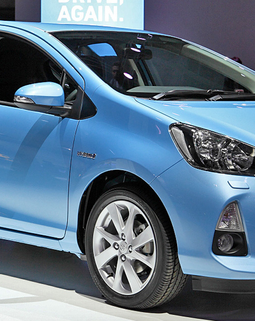Discover the challenges and prospects shaping the development of the automobile sector in Bangladesh and the strategies to foster growth in this vital industry.
1. Introduction: Understanding The Dynamics Of Bangladesh's Automobile Sector
The automobile sector plays a pivotal role in Bangladesh's economy, contributing to employment generation, industrial growth, and technological advancement. However, the sector faces various challenges, ranging from infrastructural limitations to policy constraints, which hinder its full potential. In this article, we delve into the challenges and prospects of the automobile sector in Bangladesh, exploring strategies to overcome obstacles and foster sustainable growth.
2. Challenges Confronting The Automobile Sector
Despite significant progress, Bangladesh's automobile sector encounters several challenges that impede its development. One of the primary challenges is the lack of adequate infrastructure, including road networks, transportation facilities, and automotive manufacturing facilities. Additionally, high import tariffs, taxation policies, and regulatory barriers inflate vehicle prices, limiting consumer affordability and hindering market growth. Moreover, the industry grapples with supply chain inefficiencies, limited access to financing, and inadequate skilled labor, further exacerbating challenges faced by manufacturers and dealers.
3. Policy Reforms And Regulatory Initiatives
To address the challenges confronting the automobile sector, Bangladesh's government has initiated various policy reforms and regulatory measures aimed at promoting industry growth and investment. These include streamlining import procedures, reducing import tariffs on vehicle components, and incentivizing domestic manufacturing through tax breaks and subsidies. Moreover, the government has prioritized infrastructure development, investing in road networks, ports, and logistics facilities to facilitate smoother transportation and distribution of vehicles across the country.
4. Prospects And Opportunities For Growth
Despite the challenges, the automobile sector in Bangladesh presents significant prospects and opportunities for growth. With a large and rapidly expanding population, rising disposable incomes, and increasing urbanization, there is a growing demand for passenger cars, commercial vehicles, and two-wheelers in the country. Moreover, the shift towards electric vehicles (EVs) and sustainable mobility solutions presents new avenues for investment and innovation in the automotive sector. By embracing technological advancements, adopting green initiatives, and fostering industry collaboration, Bangladesh can position itself as a regional hub for automotive manufacturing and innovation.
5. Investment And Collaboration Strategies
To capitalize on the prospects of the automobile sector, stakeholders must adopt investment and collaboration strategies that promote industry growth and competitiveness. This includes forging partnerships with international automakers and suppliers to leverage their expertise, technologies, and best practices.
6. Conclusion: Charting A Path For Sustainable Growth
In conclusion, the automobile sector in Bangladesh faces multifaceted challenges, ranging from infrastructural limitations to policy constraints. However, by leveraging policy reforms, regulatory initiatives, and investment strategies, Bangladesh can overcome these challenges and capitalize on the prospects of the automotive industry. By fostering innovation, promoting sustainability, and fostering industry collaboration, Bangladesh can chart a path for sustainable growth and become a leading player in the global automotive market.





